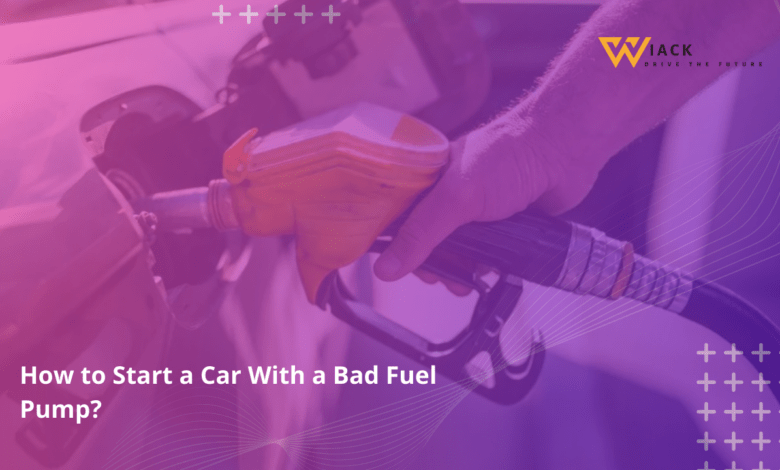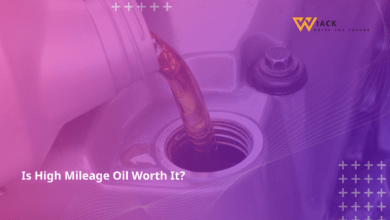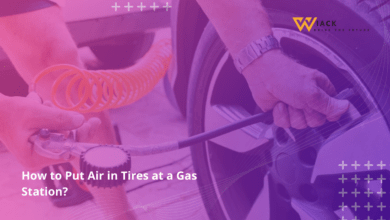How to Start a Car With a Bad Fuel Pump?

Did you know that fuel pump issues account for approximately 15% of all vehicle breakdowns? This statistic highlights the importance of understanding how to deal with a faulty fuel pump, especially when you find yourself in a situation where you need to start your car despite this problem. In this comprehensive guide, we’ll explore the ins and outs of fuel pumps, how to diagnose issues, and most importantly, how to start a car with a bad fuel pump.
Understanding the Problem
Before we dive into the solutions, it’s crucial to understand what we’re dealing with. A fuel pump is a vital component of your vehicle’s fuel system, and when it malfunctions, it can leave you stranded. Let’s break down the basics to give you a solid foundation.
What is a Fuel Pump?
A fuel pump is an essential component in your vehicle’s fuel system. Its primary function is to transfer fuel from the gas tank to the engine. Think of it as the heart of your car’s fuel circulation system. Just as your heart pumps blood throughout your body, the fuel pump ensures that your engine receives a steady supply of fuel to keep it running smoothly.
Modern vehicles typically use electric fuel pumps, which are located inside or near the fuel tank. These pumps are designed to operate continuously while the engine is running, maintaining a constant pressure in the fuel lines. This consistent pressure is crucial for the proper functioning of fuel injectors, which rely on precise fuel delivery to optimize engine performance.
The fuel pump doesn’t work alone; it’s part of a larger system that includes the fuel tank, fuel lines, fuel filter, and fuel injectors. Each of these components plays a vital role in ensuring that clean fuel reaches your engine at the right pressure and in the right amount.
How Does a Fuel Pump Work?
Understanding how a fuel pump works can help you appreciate its importance and recognize when it’s not functioning correctly. Here’s a step-by-step breakdown of the fuel pump’s operation:
- Activation: When you turn the key in your ignition, the car’s computer sends a signal to the fuel pump to start working.
- Fuel Intake: The pump draws fuel from the tank through a strainer that filters out large debris.
- Pressurization: The fuel is then pressurized within the pump. This pressure is crucial for proper fuel injection.
- Fuel Delivery: The pressurized fuel is sent through the fuel lines to the engine.
- Pressure Regulation: A fuel pressure regulator ensures that the fuel is delivered at the correct pressure for your specific engine.
- Excess Fuel Return: Any excess fuel not used by the engine is returned to the tank via a return line.
This process happens continuously while your engine is running, ensuring a steady supply of fuel. The fuel pump must maintain the correct pressure at all times, which can range from 30 to 80 psi (pounds per square inch) depending on the vehicle model and fuel system design.
What Causes a Fuel Pump to Fail?
Fuel pumps are designed to last for many years, often for the lifetime of the vehicle. However, several factors can lead to premature failure:
- Contaminated Fuel: Dirt, debris, or water in the fuel can damage the pump over time. These contaminants can cause increased friction, leading to wear and tear on the pump’s components.
- Running on Low Fuel: Consistently driving with a low fuel level can cause the pump to overheat. The fuel in the tank acts as a coolant for the pump, and when the level is low, the pump has to work harder and can overheat.
- Electrical Issues: Problems with the electrical system, such as a weak battery or faulty wiring, can cause the pump to work inefficiently or fail completely.
- Normal Wear and Tear: Like all mechanical components, fuel pumps can simply wear out over time due to regular use.
- Clogged Fuel Filter: A clogged fuel filter can cause the pump to work harder than necessary, leading to premature failure.
- Poor Quality Fuel: Using low-quality or contaminated fuel can damage the pump and other components of the fuel system.
- Overheating: If the engine overheats, it can cause damage to the fuel pump, especially if it’s located near the engine.
Understanding these causes can help you take preventive measures to extend the life of your fuel pump. Regular maintenance, using quality fuel, and avoiding running on a low tank can go a long way in preventing fuel pump issues.
Symptoms of a Bad Fuel Pump
Recognizing the signs of a failing fuel pump early can save you from being stranded and potentially prevent more extensive damage to your vehicle. Here are some common symptoms to watch out for:
- Engine Sputtering: If your engine suddenly loses power or sputters while driving at high speeds, it could be a sign that your fuel pump isn’t delivering a consistent flow of fuel.
- Loss of Power Under Stress: If your car loses power when accelerating or climbing a hill, it might indicate that the fuel pump can’t keep up with the increased demand for fuel.
- Surging: Random acceleration without pressing the gas pedal could mean the fuel pump is sending inconsistent amounts of fuel to the engine.
- Decreased Fuel Efficiency: If you notice you’re filling up more often than usual, a weak fuel pump might be the culprit, as it may be allowing fuel to leak into the engine.
- Difficulty Starting: A car that’s hard to start or requires multiple attempts to turn over could be suffering from low fuel pressure due to a failing pump.
- Engine Won’t Start: In severe cases, a completely failed fuel pump will prevent the engine from starting at all.
- Whining Noise from the Fuel Tank: A loud whining or buzzing noise coming from the area of your fuel tank can indicate a fuel pump that’s working too hard or beginning to fail.
- Check Engine Light: While not specific to fuel pump issues, a illuminated check engine light can sometimes indicate fuel system problems.
If you notice one or more of these symptoms, it’s important to have your vehicle checked by a professional as soon as possible. Continuing to drive with a failing fuel pump can lead to more serious engine problems and potentially leave you stranded.
Starting a Car with a Bad Fuel Pump
Now that we understand what a fuel pump does and how it can fail, let’s explore some methods for starting a car with a bad fuel pump. It’s important to note that these are temporary solutions and should only be used to get your car to a mechanic for proper repair.
Using a Fuel Pressure Gauge
One of the first steps in diagnosing and potentially starting a car with a bad fuel pump is to use a fuel pressure gauge. This tool can help you determine if the fuel pump is indeed the problem and may even help you get the car started. Here’s how to use it:
- Locate the Fuel Pressure Test Port: This is usually found on the fuel rail near the engine. Consult your vehicle’s manual if you’re unsure of its location.
- Attach the Fuel Pressure Gauge: Connect the gauge to the test port. Make sure it’s securely attached to prevent fuel leaks.
- Turn the Key: Turn the ignition key to the “On” position without starting the engine. This should activate the fuel pump.
- Check the Pressure Reading: The gauge should show a reading within the manufacturer’s specified range. If it’s significantly lower, this confirms a fuel pump issue.
- Try Starting the Engine: If the pressure is low but not zero, try starting the engine while monitoring the gauge. Sometimes, the act of checking the pressure can temporarily unstick a failing pump.
- Tap the Fuel Tank: If the pressure is very low, try gently tapping on the fuel tank while a helper turns the key. This can sometimes jar a stuck pump into working temporarily.
Remember, using a fuel pressure gauge requires some technical knowledge and should be done carefully to avoid fuel leaks. If you’re not comfortable performing this test, it’s best to seek professional help.
Creating External Pressure
If the fuel pressure gauge method doesn’t work, you might need to create external pressure to get fuel flowing to the engine. This method should only be attempted if you’re comfortable working with your vehicle’s fuel system and understand the risks involved.
- Locate the Fuel Line: Find the fuel line that runs from the tank to the engine. It’s usually a metal or rubber line running along the underside of the car.
- Disconnect the Fuel Line: Carefully disconnect the fuel line near the engine. Be prepared for some fuel spillage and have a container ready to catch it.
- Attach a Hand Pump: Connect a hand-operated fuel pump to the disconnected fuel line. You can find these at most auto parts stores.
- Pump Fuel Manually: Use the hand pump to manually push fuel towards the engine.
- Try Starting the Engine: While a helper pumps fuel, try to start the engine. If it starts, keep pumping to maintain fuel flow.
- Drive to a Mechanic: If successful, drive directly to a mechanic for proper repair. Do not attempt to drive long distances using this method.
This method is risky and should only be used as a last resort. It requires careful handling of fuel and can be dangerous if not done correctly. Always prioritize safety and consider calling for professional assistance instead.
Balancing Engine Heat
Sometimes, a fuel pump that’s on the verge of failing can be coaxed into working by managing the engine’s temperature. This method takes advantage of the fact that fuel pumps can sometimes work better when they’re either cooler or warmer than normal.
For a Cold Start:
- Let the Engine Cool: If your car has been sitting for a while and won’t start, let it cool completely. This can take several hours.
- Try Starting: Once cool, try starting the engine. A cooler fuel pump might work better temporarily.
- Use Short Bursts: If it doesn’t start immediately, try cranking the engine in short bursts of 10-15 seconds, with a minute rest between attempts.
For a Hot Start:
- Heat the Engine Bay: If the car has been sitting in cold weather, try using a hairdryer or heat gun to gently warm the area around the fuel pump. Be careful not to overheat any components.
- Try Starting: After warming, attempt to start the engine.
- Maintain Heat: If successful, try to keep the engine running to maintain the heat.
These methods are based on the principle that temperature changes can affect the performance of a failing fuel pump. However, they are not guaranteed to work and should only be used as temporary measures to get your car to a repair shop.
Fuel Pump Maintenance
Prevention is always better than cure, especially when it comes to your vehicle’s fuel system. Proper maintenance of your fuel pump and related components can significantly extend their lifespan and prevent unexpected breakdowns. Let’s explore some key maintenance practices that can help keep your fuel pump in top condition.
Using Clean Fuel
The quality of fuel you put into your vehicle plays a crucial role in the health of your fuel pump and entire fuel system. Here’s why clean fuel matters and how to ensure you’re using it:
- Choose Reputable Gas Stations: Opt for well-known, high-volume gas stations. These stations are more likely to have fresher fuel and better-maintained pumps and storage tanks.
- Avoid Filling Up When a Tanker is Refilling the Station’s Tanks: This can stir up sediment in the station’s tanks, potentially introducing contaminants into your vehicle’s tank.
- Use the Recommended Fuel Grade: Always use the fuel grade recommended by your vehicle’s manufacturer. Using a lower grade to save money can lead to engine problems and potentially damage the fuel pump.
- Consider Fuel Additives: Occasionally using fuel system cleaners can help remove deposits and keep your fuel system clean. However, don’t overuse these additives, as some can be harsh on fuel system components if used too frequently.
- Be Cautious with Ethanol Blends: While most modern vehicles can handle E10 (10% ethanol) fuel, higher ethanol blends can be problematic for some fuel systems. Check your owner’s manual for recommendations.
- Filter Your Fuel: If you’re filling up from a portable gas can or in areas where fuel quality is questionable, consider using a funnel with a built-in filter to catch any debris before it enters your tank.
By consistently using clean, high-quality fuel, you’re providing the best possible environment for your fuel pump to operate in, potentially extending its life and improving overall vehicle performance.
Refueling Habits
Your refueling habits can have a significant impact on the longevity of your fuel pump. Here are some best practices to follow:
- Keep Your Tank at Least Quarter Full: Try to refill your tank before it drops below a quarter full. The fuel in your tank actually helps cool the fuel pump, and running on low fuel can cause the pump to overheat.
- Avoid Running Out of Gas: Running out of fuel can damage the fuel pump by causing it to run dry and overheat. It can also cause debris from the bottom of the tank to be sucked into the pump.
- Don’t Top Off: When the pump automatically shuts off, don’t try to squeeze in more fuel. This can overwhelm the evaporative emissions system and potentially lead to fuel spills.
- Cap It Properly: Always ensure your gas cap is tightened properly after refueling. A loose or faulty gas cap can allow debris and moisture to enter the fuel tank.
- Be Consistent: Try to maintain consistent refueling habits. Frequent short trips with small amounts of fuel can lead to condensation in the tank, which can contaminate the fuel.
- Winter Precautions: In cold climates, keep your tank fuller in winter to prevent condensation from forming and freezing in the fuel lines.
By adopting these refueling habits, you’re not only protecting your fuel pump but also ensuring better overall performance and fuel efficiency for your vehicle.
Maintaining the Fuel Injection System
The fuel injection system works hand in hand with your fuel pump to deliver the right amount of fuel to your engine. Keeping this system clean and well-maintained can reduce strain on your fuel pump and improve overall engine performance. Here’s how to maintain your fuel injection system:
- Regular Fuel Injector Cleaning: Over time, fuel injectors can become clogged with deposits, leading to poor fuel atomization and increased strain on the fuel pump. Consider having your fuel injectors professionally cleaned every 30,000 to 50,000 miles.
- Use Fuel Injector Cleaners: Adding a fuel injector cleaner to your tank every 3,000 to 5,000 miles can help keep injectors clean and functioning optimally. Be sure to use a product recommended for your specific vehicle.
- Replace Oxygen Sensors: Faulty oxygen sensors can cause the engine to run rich (too much fuel) or lean (too little fuel), both of which can affect fuel pump performance. Replace oxygen sensors according to your vehicle’s maintenance schedule.
- Check and Replace Spark Plugs: Worn spark plugs can cause incomplete combustion, leading to unburned fuel and increased strain on the fuel system. Replace spark plugs at the intervals recommended in your owner’s manual.
- Maintain the Mass Airflow Sensor: A dirty or faulty mass airflow sensor can cause incorrect fuel mixture, potentially leading to increased fuel pump wear. Clean or replace this sensor as recommended by your vehicle manufacturer.
- Address Check Engine Lights Promptly: If your check engine light comes on, have it diagnosed as soon as possible. Many fuel system issues can trigger this light, and addressing them early can prevent more serious problems.
- Use Quality Motor Oil: Believe it or not, the quality of your motor oil can affect your fuel injection system. Poor quality oil can lead to sludge buildup, which can affect engine performance and indirectly impact the fuel system.
By keeping your fuel injection system clean and well-maintained, you’re ensuring that your fuel pump doesn’t have to work harder than necessary, potentially extending its lifespan and improving overall vehicle performance.
Replacing Fuel Filters
The fuel filter plays a crucial role in protecting your fuel pump and injection system from contaminants. A clogged fuel filter can cause your fuel pump to work harder, potentially leading to premature failure. Here’s what you need to know about fuel filter maintenance:
- Regular Replacement: Most vehicle manufacturers recommend replacing the fuel filter every 20,000 to 30,000 miles. However, this can vary depending on your vehicle model and driving conditions. Consult your owner’s manual for the recommended interval.
- Signs of a Clogged Filter: Watch for symptoms like decreased fuel efficiency, engine misfires, or difficulty starting the engine. These can all indicate a clogged fuel filter.
- Professional Replacement: While some DIY enthusiasts might feel comfortable replacing their own fuel filter, it’s often best left to professionals. Modern fuel systems are pressurized and can be dangerous if not handled properly.
- Quality Matters: When replacing your fuel filter, always use a high-quality filter that meets or exceeds your vehicle manufacturer’s specifications. Cheap, low-quality filters may not provide adequate protection for your fuel system.
- Consider Driving Conditions: If you frequently drive in dusty conditions or use lower-quality fuel, you may need to replace your fuel filter more often. Pay attention to your vehicle’s performance and consult with a mechanic if you’re unsure.
- Check the Fuel Lines: When replacing the fuel filter, it’s a good opportunity to inspect the fuel lines for any signs of wear, cracking, or leaks. Addressing these issues early can prevent more serious problems down the road.
- Don’t Ignore It: While it might be tempting to put off replacing the fuel filter, doing so can lead to more expensive repairs in the future. A clogged filter can cause damage to your fuel pump and injectors over time.
By staying on top of fuel filter replacements, you’re providing an important line of defense for your fuel pump and ensuring that clean fuel reaches your engine consistently.
Avoiding Emptying the Fuel Tank
While it might be tempting to drive your car until the fuel gauge is on empty, especially when gas prices are high, this habit can be detrimental to your fuel pump. Here’s why you should avoid running your tank too low:
- Fuel as a Coolant: The fuel in your tank actually helps cool the fuel pump. When the tank is low, the pump has to work harder and can overheat.
- Sediment Buildup: Over time, sediment and debris can settle at the bottom of your fuel tank. When you run your tank very low, this sediment can be sucked into the fuel pump, causing damage.
- Air in the System: Running out of fuel can introduce air into the fuel system. This can cause difficulty in restarting the engine and potentially damage the fuel pump or injectors.
- Increased Wear: Consistently running on a low tank forces the fuel pump to work harder to draw fuel from the bottom of the tank, increasing wear on the pump.
- Inconsistent Fuel Pressure: When the tank is low, it’s harder for the pump to maintain consistent fuel pressure, which can affect engine performance.
To protect your fuel pump and ensure optimal performance:
- Try to keep your tank at least a quarter full at all times.
- Consider refueling when your tank reaches half empty, especially before long trips.
- If you do run very low on fuel, consider adding a fuel system cleaner to your next full tank to help remove any sediment that may have been stirred up.
By maintaining a healthy fuel level in your tank, you’re not only protecting your fuel pump but also ensuring more consistent engine performance and potentially avoiding the inconvenience of running out of fuel at an inopportune time.
Choosing Gas Stations
The quality of fuel you put into your vehicle can have a significant impact on the health of your fuel pump and overall fuel system. Here are some tips for choosing the right gas station:
- Opt for High-Volume Stations: Busier gas stations typically have fresher fuel, as their storage tanks are refilled more frequently. Fresher fuel is less likely to contain contaminants that can damage your fuel system.
- Look for Top Tier Gas: Many major brands offer Top Tier gasoline, which contains more detergent additives than required by the EPA. These additives can help keep your fuel system clean.
- Avoid Stations During Tanker Refills: If you see a tanker refilling the station’s underground tanks, consider coming back later. The process of refilling can stir up sediment in the tanks, potentially introducing contaminants into your vehicle.
- Check for Water-Blocking Filters: Some stations use special filters to prevent water from entering their underground storage tanks. This can be especially important in areas with high humidity or frequent rain.
- Consider Brand Reputation: While not always a guarantee of quality, well-known national brands often have stricter quality control measures in place.
- Look for Clean, Well-Maintained Stations: A clean, well-kept station is more likely to take good care of its fuel storage and dispensing equipment.
- Be Cautious with Extremely Low-Priced Fuel: While everyone loves a bargain, extremely cheap gas might be of lower quality or contain a higher percentage of ethanol, which can be problematic for some vehicles.
- Check for Credit Card Skimmers: While not directly related to fuel quality, protecting your financial information is important. Always check for signs of tampering at the pump before inserting your card.
By being selective about where you fuel up, you’re taking an important step in protecting your fuel pump and entire fuel system from potential contaminants and ensuring better overall performance for your vehicle.
Safety Considerations
When dealing with a bad fuel pump or attempting any of the methods described to start your car, it’s crucial to prioritize safety. Here are some important safety considerations to keep in mind:
When to Avoid Starting a Car with a Bad Fuel Pump
While the methods described earlier can be useful in emergency situations, there are times when it’s best to avoid attempting to start a car with a known fuel pump issue:
- Visible Fuel Leaks: If you notice any fuel leaks, do not attempt to start the car. Fuel leaks can lead to fire or explosion hazards.
- Strong Fuel Odor: A strong smell of gasoline could indicate a serious fuel system problem. It’s best to have the car towed to a mechanic in this case.
- Recent Accident: If the car has been in an accident, even a minor one, there could be damage to the fuel system that isn’t immediately visible.
- Electrical Issues: If you’re experiencing multiple electrical problems along with fuel pump symptoms, there could be a more serious underlying issue.
- Repeated Failed Attempts: If you’ve tried to start the car multiple times without success, continuing to crank the engine could lead to other problems, such as a flooded engine or a drained battery.
- Unfamiliar with Car Mechanics: If you’re not comfortable working with car engines or fuel systems, it’s always safer to call for professional help rather than attempting DIY solutions.
Remember, while getting your car started is important, your safety should always be the top priority. If you’re in doubt about the safety of starting your car, it’s best to err on the side of caution and seek professional assistance.
Professional Help
While it can be tempting to try and fix car problems on your own, especially when it comes to something as crucial as a fuel pump issue, there are many situations where seeking professional help is the best course of action:
- Diagnostic Accuracy: Professional mechanics have specialized tools and expertise to accurately diagnose fuel system issues. What seems like a fuel pump problem could be related to other components of the fuel or electrical system.
- Safety: Working with fuel systems can be dangerous due to the flammable nature of gasoline and the pressurized components in modern fuel systems. Professionals have the proper safety equipment and knowledge to handle these risks.
- Warranty Considerations: If your vehicle is still under warranty, attempting DIY repairs could void your coverage. Always check your warranty terms before attempting any repairs.
- Comprehensive Repairs: A professional can not only fix the immediate problem but also identify and address related issues that might have contributed to the fuel pump failure.
- Time and Frustration: While paying for professional help might seem expensive, it can often save you time and frustration in the long run, especially if you’re not experienced with car repairs.
- Access to Parts: Professional mechanics often have easier access to quality replacement parts and can ensure you’re getting the correct components for your specific vehicle model.
- Long-Term Solutions: A professional can provide advice on preventing future issues and maintaining your fuel system for optimal performance.
When seeking professional help:
- Choose a reputable mechanic or dealership with good reviews and certifications.
- Get a written estimate before authorizing any work.
- Ask for an explanation of the problem and the proposed solution in terms you can understand.
- Don’t be afraid to ask questions about the repair process and any preventive measures you can take in the future.
Remember, while it’s valuable to understand how your car works and be able to perform basic maintenance, complex issues like fuel pump problems often require professional expertise to resolve safely and effectively.
Conclusion
Dealing with a bad fuel pump can be a challenging experience, but understanding the symptoms, causes, and potential solutions can help you navigate this issue more effectively. Remember that while there are temporary measures you can take to start a car with a failing fuel pump, these should only be used in emergency situations to get your vehicle to a professional mechanic.
Regular maintenance is key to preventing fuel pump issues. By using clean fuel, maintaining proper fuel levels, replacing filters as recommended, and being mindful of your refueling habits, you can significantly extend the life of your fuel pump and avoid unexpected breakdowns.
When faced with a potential fuel pump problem, always prioritize safety. If you’re unsure about the severity of the issue or uncomfortable with attempting any DIY solutions, don’t hesitate to seek professional help. A qualified mechanic can accurately diagnose the problem, provide a safe and effective solution, and offer advice on preventing future issues.
Ultimately, your vehicle’s fuel system is complex and crucial to its operation. By staying informed and proactive about maintenance, you can ensure better performance, improved fuel efficiency, and a more reliable driving experience overall. Remember, the cost of regular maintenance is often far less than the cost of major repairs or replacements down the road.
Stay safe on the roads, and happy driving!
Get the latest car news, reviews, and prices at Wiack.com. Your one-stop destination for all things automotive.





